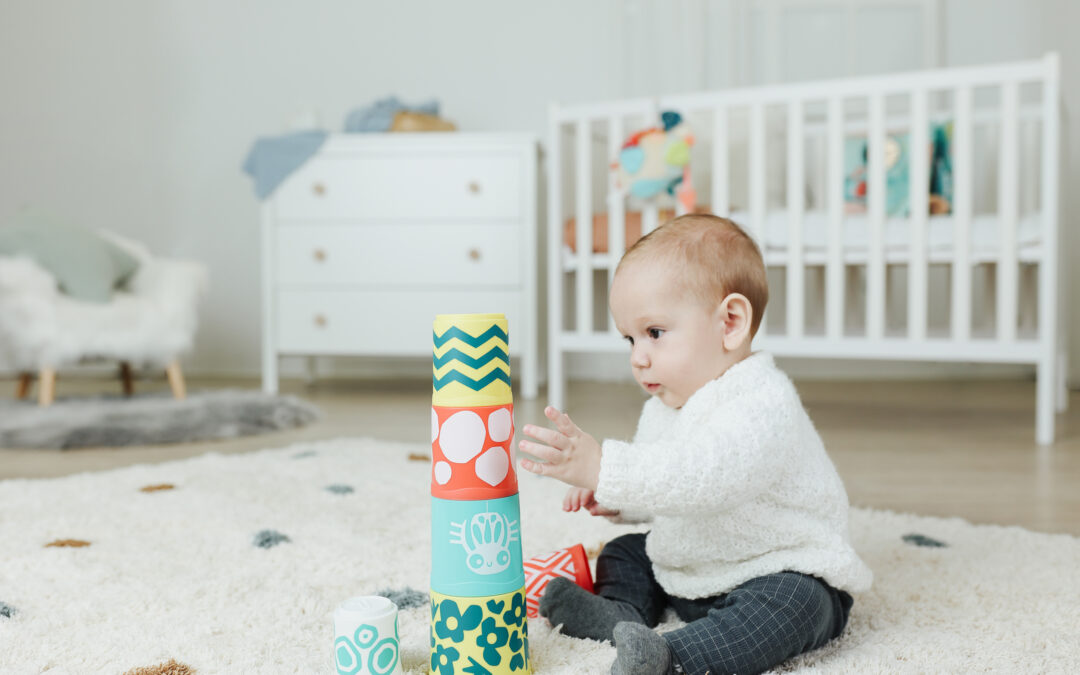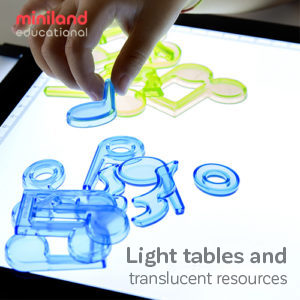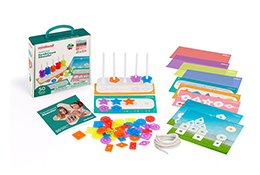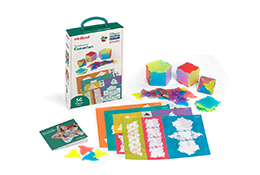Nothing is more revolutionary than being born. From living in the womb and having all that you need until you are ready to be born, and the lungs fill up with air and start to help a baby breath. Then the baby learns how to navigate light and sound, to recognize a parent’s voice and how to let everyone know they are cold or hot.
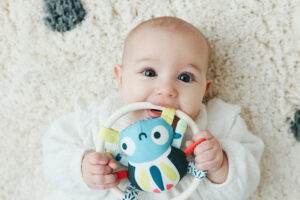
Sensory Development between 0 and 6 months
A baby’s development and first learning experiences are purely sensory. What a baby feels, the information it receives through its senses, both internal (hunger and fullness, sleep, bowel movements…), and external (what his or her eyes see, what they hear, what their skin feels or what they feel when their little hands touch something), lays the foundation on which all their subsequent learning will develop.
If he cries because he feels hungry, and mom or dad feed him, and once that tremendous storm that he felt inside is satisfied, he perceives calm, he will begin to establish a relationship between the sensation of hunger – crying – eating- and feeling satiation and calm. The same will happen with that shiny and attractive object, which rings when you reach out and touch it, that moves and encourages you to turn to catch it, and changes color depending on the perspective from which you look at it.
The first three or four months of a baby’s life are focused on those stimuli that come from within, trying to adapt to the world outside of its mother’s womb, adjusting its biological and circadian rhythms, sleeping most of the time and eating when awake.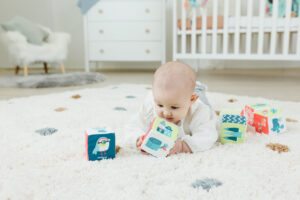
The arms of mom and dad will be a baby’s natural refuge.
At this stage, the most interesting stimulus for the baby is the face of the people who care for them, a voice singing softly to him, the contact of their skin and the movements they provide when they carry them.
A baby’s chances of moving on their own are still very limited, because almost all of their activity is controlled by their reflexes, which little by little will mature and integrate so that he can move voluntarily, to pursue and reach those stimuli that catch his attention.
It is from 3 months onwards when it is very interesting to start placing the baby on the floor, so they can feel their body and all the areas where its body is supported by, because that will give them motivation for them to start moving.
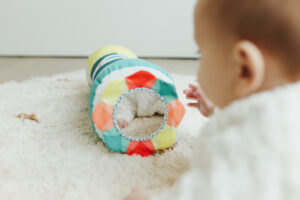
Sight and ears will be the force that drives a baby’s movement
Now babies will begin to be interested in objects of contrasting and striking colors, shiny or reflective. Little by little, a baby will be able to start grabbing and releasing an item at will, and textured objects and toys that make sounds when manipulated with, will help him or her establish those cause-effect relationships.
Objects that are easy to grasp, that are light, and that you can put in your mouth are very interesting. If, furthermore, when you leave them on the surface on which he is standing, they protrude from it, they will encourage him to turn around to reach them.
A little later, when the control of his movements is greater and their manipulation skills more selective, the grip on objects changes, and the baby will be able to explore elements of various shapes and sizes, first passing them from one hand to the other and, then, holding one in each hand to knock them together and let them fall, and then wanting to do it again.
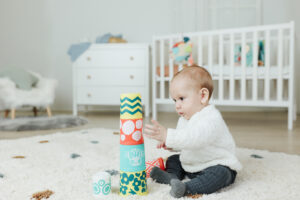
And so this is how a baby begins to learn another new skill that will be developed throughout the first year of his or her life, it is about object permanence, and it consists of the baby discovering that objects that fall from their hands and no longer see, do not they disappear.
At this point, now you can offer somewhat more elaborate toys that offer different ways of grasping and manipulating, such as stackable cups or towers of rings. These, in addition, move across the floor in a single direction and not very quickly, so it is easy for a baby to try to reach them when they drop them or release them, turning around or starting to drag them.
From here on, the pace at which the baby will reach milestones in its motor and cognitive development is growing, and everything will continue to be cemented through exploration through its senses. We, as the adults that raise are around them, have the role of providing a stimulating space to facilitate their development.
Original blog post written by Jessica Romero Sanchez, Occupational Therapist.
Adapted and translated by Miniland Team.
